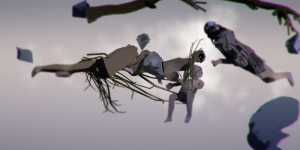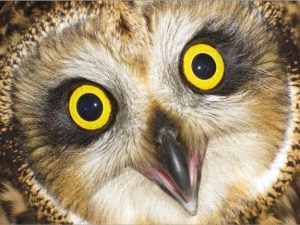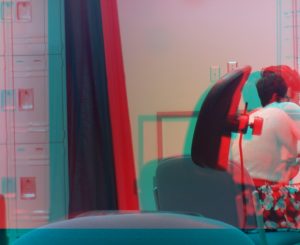sketch
function setup() {
createCanvas(600, 600);
background(164, 230, 239);
//background texture
//corner squares
stroke(255);
fill(164, 230, 239);
rect(0, 0, 120, 120);
rect(width - 120, 0, 120, 120);
rect(width - 120, height - 120, 120, 120);
rect(0, height - 120, 120, 120);
//grid around head
rect(width/2 - 120, height/2 - 120, 240, 240);
line(0, height/2 - 120, 600, height/2 - 120);
line(0, height/2 + 120, 600, height/2 + 120);
line(width/2 - 120, 0, width/2 - 120, 600);
line(width/2 + 120, 0, width/2 + 120, 600);
//Triangle strips
beginShape(TRIANGLE_STRIP); //upper
vertex(width/2 - 120, 0);
vertex(width/2 - 100, height/2 - 120);
vertex(width/2 - 80, 0);
vertex(width/2 - 60, height/2 - 120);
vertex(width/2 - 40, 0);
vertex(width/2 - 20, height/2 - 120);
vertex(width/2, 0);
vertex(width/2 + 20, height/2 - 120);
vertex(width/2 + 40, 0);
vertex(width/2 + 60, height/2 - 120);
vertex(width/2 + 80, 0);
vertex(width/2 + 100, height/2 - 120);
vertex(width/2 + 120, 0);
endShape();
beginShape(TRIANGLE_STRIP); //right
vertex(600, height/2 - 120);
vertex(width/2 + 120, height/2 - 100);
vertex(600, height/2 - 80);
vertex(width/2 + 120, height/2 - 60);
vertex(600, height/2 - 40);
vertex(width/2 + 120, height/2 - 20);
vertex(600, height/2 - 0);
vertex(width/2 + 120, height/2 + 20);
vertex(600, height/2 + 40);
vertex(width/2 + 120, height/2 + 60);
vertex(600, height/2 + 80);
vertex(width/2 + 120, height/2 + 100);
vertex(600, height/2 + 120);
endShape();
//bottom
beginShape(TRIANGLE_STRIP);
vertex(width/2 - 120, 600);
vertex(width/2 - 100, height/2 + 120);
vertex(width/2 - 80, 600);
vertex(width/2 - 60, height/2 + 120);
vertex(width/2 - 40, 600);
vertex(width/2 - 20, height/2 + 120);
vertex(width/2, 600);
vertex(width/2 + 20, height/2 + 120);
vertex(width/2 + 40, 600);
vertex(width/2 + 60, height/2 + 120);
vertex(width/2 + 80, 600);
vertex(width/2 + 100, height/2 + 120);
vertex(width/2 + 120, 600);
endShape();
beginShape(TRIANGLE_STRIP); //left
vertex(0, height/2 - 120);
vertex(width/2 -120, height/2 - 100);
vertex(0, height/2 - 80);
vertex(width/2 -120, height/2 - 60);
vertex(0, height/2 - 40);
vertex(width/2 -120, height/2 - 20);
vertex(0, height/2 - 0);
vertex(width/2 -120, height/2 + 20);
vertex(0, height/2 + 40);
vertex(width/2 -120, height/2 + 60);
vertex(0, height/2 + 80);
vertex(width/2 -120, height/2 + 100);
vertex(0, height/2 + 120);
endShape();
//triangles
/*stroke(255);
fill(164, 230, 239);
beginShape(TRIANGLE_STRIP);
vertex(0, 0);
vertex(100, 100);
vertex(200, 0);
vertex(300, 300);
vertex(400, 0);
vertex(500, 500);
vertex(600, 0);
vertex(600, 600);
endShape();*/
//beginShape() // square around head
}
function draw() {
//hair section (underneath head graphic)
stroke(0)
fill(210);
quad(297, 280, 377, 280, 357, 350, 307, 385); // hair grey section
fill(0);
rect(232, 206, 10, 20);
//head
stroke(0)
fill(255, 220, 200);
ellipse(267, 310, 130, 200);
//hair (over head graphic)
noStroke();
fill(210);
rect(297, 290, 50, 20); // grey section
triangle(297, 310, 307, 310, 297, 330); // sideburns
fill(0);
quad(237, 205, 367, 220, 417, 295, 287, 290); //top black section
//face details
fill(255, 220, 200);
ellipse(327, 320, 32, 52); //ear
stroke(0)
arc(327, 320, 32, 52, 5*PI/4, PI/2); //partial ear outline
strokeWeight(2);
line(237, 360, 211, 360); //mouth horizontal
arc(247, 360, 20, 20, 4*PI/6, 8*PI/6); // mouth side
fill(0)
ellipse(random(-3, 3) + 242, random(-3, 3) + 290, 20, 20); //crazy eye
noStroke()
fill(254, 118, 145);
ellipse(267, 330, 30, 30); //cheek blush
//coffee mugs
//top left
stroke(0);
fill(255);
ellipse(75, 60, 40, 40); //handle
fill(164, 230, 239);
ellipse(75, 60, 30, 30); //cut-out handle
fill(255);
rect(30, 30, 50, 60, 8, 8, 5, 5); //mug
fill(0);
ellipse(55, 37, 40, 5); //coffee
//top right
stroke(0);
fill(255);
ellipse(width - 45, 60, 40, 40); //handle
fill(164, 230, 239);
ellipse(width - 45, 60, 30, 30); //cut-out handle
fill(255);
rect(width - 90, 30, 50, 60, 8, 8, 5, 5); //mug
fill(0);
ellipse(width - 65, 37, 40, 5); //coffee
//bottom right
stroke(0);
fill(255);
ellipse(width - 45, height - 60, 40, 40); //handle
fill(164, 230, 239);
ellipse(width - 45, height - 60, 30, 30); //cut-out handle
fill(255);
rect(width - 90, height - 90, 50, 60, 8, 8, 5, 5); //mug
fill(0);
ellipse(width - 65, height - 83, 40, 5); //coffee
//bottom left
stroke(0);
fill(255);
ellipse(75, height - 60, 40, 40); //handle
fill(164, 230, 239);
ellipse(75, height - 60, 30, 30); //cut-out handle
fill(255);
rect(30, height - 90, 50, 60, 8, 8, 5, 5); //mug
fill(0);
ellipse(55, height - 83, 40, 5); //coffee
}
I have to say, creating this self portrait was so much fun. With my limited knowledge of p5js, I was forced to experiment with a totally different art style than I am accustomed to. Despite this literally being constricting, I found it freeing.
I wanted to do something particular to coding – something I couldn’t do with normal pencil in paper – so I centered my piece around the vibrating eye. Coincidentally, the vibrating eye linked quite well to one of my life passions: coffee.
I think I’ll call this “Portrait of the Coffee as a Young Man”.

![[OLD FALL 2017] 15-104 • Introduction to Computing for Creative Practice](../../../../wp-content/uploads/2020/08/stop-banner.png)


